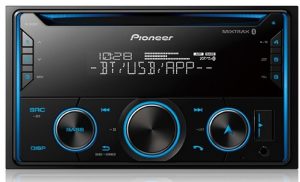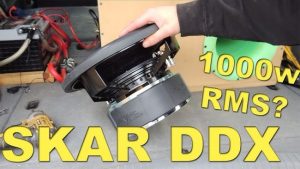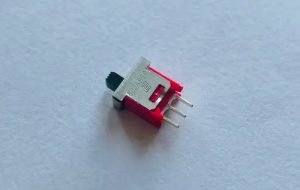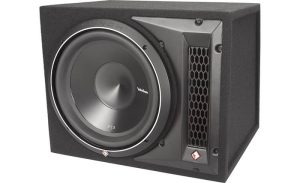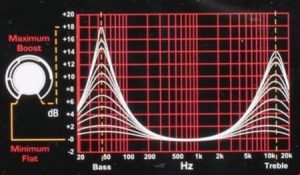To know what type of stereo fits in your car, you need to know the make, model, and year of your vehicle, as well as the size and shape of the current stereo system (if any). This information is necessary to determine the type of installation kit and mounting hardware required, as well as the size of the new stereo (e.g., single-DIN or double-DIN). It’s always best to check the manufacturer’s specifications for your vehicle to determine compatibility. If you need further assistance, you can also consult with a professional installer.
Contents
- Can any stereo fit in any car?
- Can I put a Bluetooth stereo in my old car?
- What Universal Car Stereo Fits My Car?
- Differences: Single-DIN vs. Double-DIN Car Stereos?
- Can I install a car stereo myself?
- What are the different car stereo size options?
- Will a Single-DIN stereo fit into a Double-DIN cavity?
- Conclusion:
Can any stereo fit in any car?
No, not all stereos can fit in all cars. Stereos are designed to fit specific types of vehicles based on their make, model, and year, and the dimensions of the radio opening in the dashboard can vary between vehicles. Additionally, the electrical and functional compatibility between the stereo and the car’s electrical system also needs to be considered. It is important to choose a stereo that is compatible with the specific vehicle. It is intended for to ensure proper installation and functionality.
Can I put a Bluetooth stereo in my old car?
Yes, you can put a Bluetooth stereo in an old car. There are several options for installing a Bluetooth stereo in an older vehicle. Including replacing the factory radio with a new Bluetooth-enabled stereo, using a Bluetooth adapter to connect a device wirelessly to the original car stereo, or using a portable Bluetooth speaker. The exact method you choose will depend on the specifics of your car’s audio system and the features you want.
Installing a Bluetooth stereo in an old car can be done in several ways. But the exact method will depend on the specifics of your car’s audio system and the features you want. Some of the options include:
- Replacing the factory radio: One of the most straightforward ways to add Bluetooth connectivity to an older car is to replace the factory radio with a new Bluetooth-enabled stereo. This option requires some basic wiring knowledge and tools, but will give you the full range of features and controls that come with a new car stereo.
- Bluetooth Adapter: Another option is to use a Bluetooth adapter that connects to the original car stereo and allows you to stream music from your phone wirelessly. This option is less invasive than replacing the factory radio and can be easily removed if necessary.
- Portable Bluetooth speaker: If you don’t want to modify the car’s audio system, you can use a portable Bluetooth speaker that can be placed in the car and connected to your phone. This is a more affordable option but will not integrate with the car’s audio system and may not provide the best sound quality.
Whichever option you choose, make sure to read reviews and do some research to find a Bluetooth stereo or adapter that will be compatible with your car’s audio system.
What Universal Car Stereo Fits My Car?
To determine the right universal car stereo that fits your car, you need to consider the following factors:
- Dash opening size: Measure the size of the space in your car’s dashboard where you plan to install the stereo.
- Mounting style: Look for a stereo that can be mounted in a way that is compatible with your car’s dashboard.
- Power requirements: Make sure the stereo you choose is compatible with your car’s electrical system.
- Additional features: Consider your preferences for features such as Bluetooth connectivity, GPS navigation, and smartphone integration.
It’s recommended that you check your car’s manual or contact a professional to make sure you choose the right stereo for your specific make and model.
Differences: Single-DIN vs. Double-DIN Car Stereos?
When it comes to car stereos, one of the fundamental differentiators is the size and functionality, and this is where the distinction between Single-DIN and Double-DIN units becomes crucial. These terms refer to the standard sizes of car stereos, and each has its own set of characteristics.
Single-DIN car stereos are the smaller of the two, typically measuring around 2 inches in height and 7 inches in width. They are known for their compact design and simplicity, making them a popular choice for a wide range of vehicles. Single-DIN units usually have a smaller display screen and offer basic audio functions, such as radio, CD playback, and sometimes Bluetooth connectivity.
On the other hand, Double-DIN car stereos are larger, with a height of approximately 4 inches and the same 7-inch width. This increased size allows for more advanced features, including larger touchscreen displays, GPS navigation systems, smartphone integration (such as Apple CarPlay and Android Auto), and a wider range of audio adjustments. However, their larger size may require modifications to the car’s dashboard during installation.
In summary, the choice between Single-DIN and Double-DIN car stereos depends on your preferences, available dashboard space, and the level of features and functionality you desire in your car’s audio system.
Can I install a car stereo myself?
Yes, you can install a car stereo yourself. However, the process may vary depending on the make and model of your car, as well as the type of stereo you want to install. It’s recommended to read the installation manual thoroughly before starting, and to gather all the necessary tools and materials ahead of time. If you’re unsure about your ability to install the stereo, it’s best to seek the help of a professional.
What are the different car stereo size options?
Car stereo size options play a crucial role in determining the aesthetics and functionality of your car’s audio system. Two common size standards are Single-DIN and Double-DIN car stereos.
- Single-DIN: Single-DIN stereos are the more compact option, with dimensions of roughly 2 inches in height and 7 inches in width. They are a popular choice for many vehicles due to their universal fit. While they offer a smaller display and fewer features compared to Double-DIN units, they are known for their simplicity and ease of installation. Single-DIN stereos are a practical choice for those looking for basic audio functions.
- Double-DIN: Double-DIN stereos are larger, approximately 4 inches in height and 7 inches in width. This extra size allows for more advanced features and a more extensive display. Double-DIN units often include features like touchscreen displays, built-in navigation systems, smartphone integration, Bluetooth connectivity, and enhanced audio adjustments. However, their installation may require modifications to your car’s dashboard to accommodate their size.
The choice between these car stereo size options depends on your specific preferences, the available space in your vehicle’s dashboard, and the level of features and functionality you desire in your car audio system.
Will a Single-DIN stereo fit into a Double-DIN cavity?
Fitting a Single-DIN stereo into a Double-DIN cavity is possible, but it requires additional components and customization. The key difference between these two stereo sizes is the height; a Single-DIN unit is smaller in height, while a Double-DIN cavity is twice as tall. To make a Single-DIN stereo fit into a Double-DIN opening, you’ll typically need a mounting kit or an adapter plate. This kit fills the extra space in the cavity and allows you to securely install the smaller stereo.
While it is technically feasible, there are some considerations to keep in mind. Firstly, the aesthetics may not be ideal, as there will be visible gaps around the stereo due to the size difference. Secondly, it might limit your options for additional features and accessories since you won’t have as much space for larger touchscreen displays or extra components.
In summary, adapting a Single-DIN stereo to fit into a Double-DIN cavity is possible with the right equipment, but it may not provide the polished look or extensive features of a dedicated Double-DIN unit.
Conclusion:
The type of stereo that fits in your car will depend on the make and model of your vehicle as well as the size and shape of the stereo unit. It’s best to consult your car’s owner manual or do some research on the specific dimensions of the stereo unit you are interested in to see if it will fit in your car. Additionally, some aftermarket stereos may require additional wiring or modifications to be compatible with your car. So be sure to take that into consideration as well.

